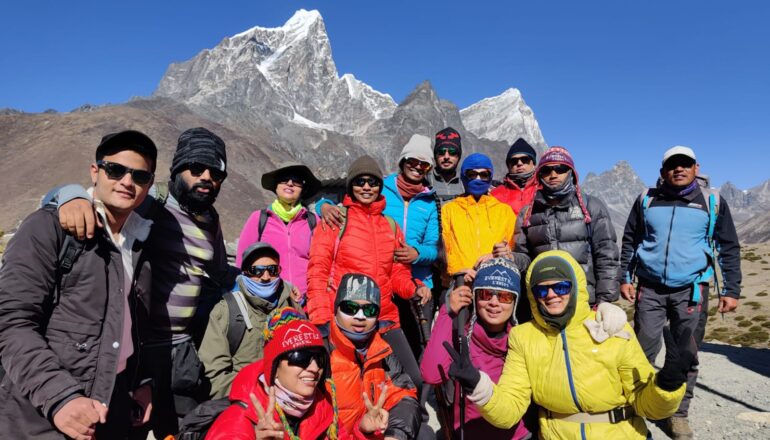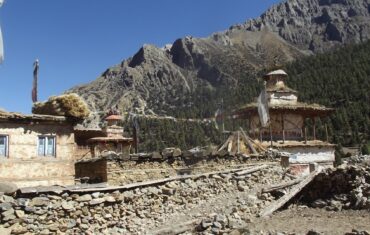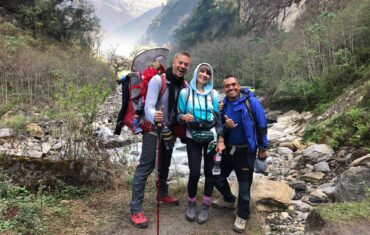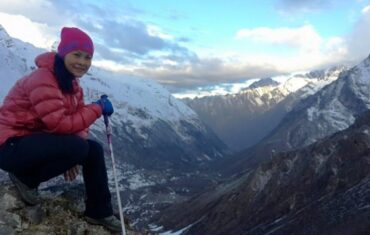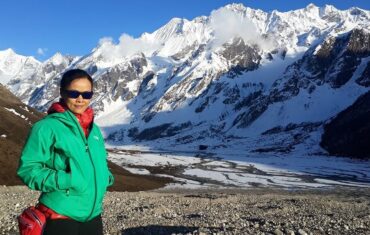September marks the end of the monsoon season in Nepal, making it one of the best times to embark on the iconic Everest Base Camp trek. This month offers a unique blend of favorable weather conditions, manageable crowds, and breathtaking scenery, making it an ideal choice for adventurers seeking an unforgettable Himalayan experience. In this detailed guide, we’ll delve into why September is an excellent time to tackle the Everest Base Camp trek, covering aspects such as weather, crowd levels, and the overall experience.
1. Weather:
September signals the transition from the monsoon season to autumn in Nepal, bringing clear skies, mild temperatures, and crisp mountain air. While occasional rainfall may still occur early in the month, the chances of precipitation decrease significantly as September progresses. The post-monsoon period rejuvenates the landscape, painting the valleys and hillsides with lush greenery and blooming wildflowers, creating a picturesque backdrop for trekkers. The visibility also improves, offering unobstructed views of the towering Himalayan peaks, including Everest, Lhotse, and Nuptse. Daytime temperatures at lower elevations range from comfortable to warm, while nights can be chilly, especially at higher altitudes. Overall, September provides excellent trekking conditions, allowing adventurers to enjoy the stunning beauty of the Khumbu region without the inconvenience of heavy rainfall or snow.
2. Crowd Levels:
One of the key advantages of Trekking to Everest Base Camp in September is the relatively low number of trekkers compared to the peak season months of October and November. With the monsoon coming to an end, many travelers opt to visit Nepal later in the autumn, resulting in fewer crowds on the trails during September. This means that trekkers can enjoy a more serene and tranquil trekking experience, with less congestion on the trails and at teahouses along the route. The quieter atmosphere allows for a deeper connection with the natural surroundings and a greater sense of immersion in the local culture. Additionally, the reduced competition for accommodation and services means that trekkers have more flexibility and freedom in planning their itinerary, without the need for advance bookings or reservations.
3. Why September?
- Ideal Weather: September offers a perfect balance of clear skies, mild temperatures, and minimal rainfall, making it an optimal time for trekking in the Everest region.
- Vibrant Landscapes: The post-monsoon period brings lush greenery, blooming flowers, and pristine mountain views, creating a stunning backdrop for trekkers.
- Manageable Crowds: With fewer trekkers on the trails compared to peak season months, September provides a more peaceful and intimate trekking experience.
- Cultural Festivities: September coincides with the auspicious Hindu festival of Dashain, celebrated across Nepal with colorful rituals, ceremonies, and cultural events. Trekkers have the opportunity to witness traditional festivities in the mountain villages along the trekking route, adding a cultural dimension to their journey.
- Accessibility: The trails and teahouses are fully operational in September, ensuring that trekkers have access to essential services and facilities throughout their journey.
In conclusion, trekking to Everest Base Camp in September offers a perfect blend of favorable weather, manageable crowds, and vibrant landscapes, making it an excellent choice for adventurers seeking an unforgettable Himalayan adventure. Whether you’re a seasoned trekker or a first-time visitor to Nepal, September promises an experience of a lifetime amidst the awe-inspiring beauty of the world’s highest peaks.
Let’s address each of your questions: FAQ
Is September a good time for Everest Base Camp?
Yes, September is generally considered a good time for the Everest Base Camp trek. It marks the end of the monsoon season, offering clearer skies and lush landscapes. The weather is generally favorable, with mild temperatures and reduced rainfall compared to earlier in the monsoon season.
Can you climb Everest in September?
Climbing Everest is possible in September, but it’s not as common as during the spring climbing season (April-May). September falls within the post-monsoon season, and while climbing is technically feasible, weather conditions may not be as stable, and fewer expeditions attempt the summit during this time.
Which month is best for Everest Base Camp trek?
The best months for the Everest Base Camp trek are generally considered to be either April-May (spring) or October-November (autumn). These months offer the most stable weather, clear skies, and comfortable temperatures, making for an optimal trekking experience.
Can you go to Everest Base Camp in October?
Yes, October is an excellent time to trek to Everest Base Camp. It’s one of the most popular months for trekking in the Everest region due to its stable weather, clear skies, and comfortable temperatures. The trails are typically busy during October, but the stunning views and pleasant conditions make it worth it.
Is it better to trek to Everest Base Camp in October or September?
Both October and September offer favorable trekking conditions, but October is generally considered slightly better due to more stable weather and clearer skies. September may still have some residual rainfall early in the month, while October typically sees drier conditions.
What is the weather like in base camp in September?
In September, the weather at Everest Base Camp can vary, but it generally includes mild daytime temperatures and cooler nights. Daytime temperatures may range from around 10 to 15 degrees Celsius (50 to 59 degrees Fahrenheit), while nighttime temperatures can drop below freezing, especially at higher elevations.
What is the coldest month in Everest Base Camp?
The coldest months in Everest Base Camp are typically December and January. During these months, temperatures can drop well below freezing, and harsh winter conditions prevail.
What is the hardest day of Everest Base Camp?
The hardest day of the Everest Base Camp trek can vary depending on factors such as individual fitness levels and weather conditions. However, many trekkers find the ascent from Namche Bazaar to Tengboche challenging due to the steep uphill sections and high altitude gain.
Is Everest Base Camp better in May or October?
Both May and October are excellent times to trek to Everest Base Camp. May offers lush landscapes, blooming rhododendrons, and warmer temperatures, while October boasts clear skies, stable weather, and fewer chances of rainfall. It ultimately depends on personal preferences and priorities.
How many days required for Everest Base Camp trek?
The standard Everest Base Camp trek typically takes around 12 to 14 days to complete, including acclimatization days and rest stops along the way. However, the exact duration can vary depending on the specific itinerary and trekking pace.
When should I go to base camp on Everest?
The best times to go to Everest Base Camp are generally in the spring (April-May) or autumn (October-November) when the weather is most stable, and the views are clearest. These months offer the optimal conditions for trekking and experiencing the beauty of the Himalayas.
When should I book Everest Base Camp trek?
It’s advisable to book your Everest Base Camp trek well in advance, especially if you’re planning to travel during the peak seasons of spring or autumn. Booking several months ahead ensures availability of permits, flights to Lukla (if applicable), and preferred accommodations along the trekking route.
How cold is Everest Base Camp in August?
In August, Everest Base Camp can experience relatively mild temperatures during the day, ranging from around 10 to 15 degrees Celsius (50 to 59 degrees Fahrenheit). However, nighttime temperatures can drop significantly, with temperatures often falling below freezing, especially at higher elevations.
Is Everest Base Camp crowded?
Everest Base Camp can be crowded, especially during the peak trekking seasons of spring and autumn. However, crowd levels can vary depending on the specific time of year and the popularity of the trekking route.
Can you go to Everest Base Camp in August?
Yes, it’s possible to trek to Everest Base Camp in August. However, August falls within the monsoon season in Nepal, so trekkers should be prepared for the possibility of heavy rainfall, muddy trails, and leeches in lower elevations. Weather conditions can be unpredictable during this time, but some trekkers still choose to embark on the adventure.
Does it rain at Everest Base Camp?
Everest Base Camp experiences minimal rainfall compared to lower elevations, but rain is still possible, especially during the monsoon season from June to August. The post-monsoon months of September and October typically see reduced rainfall and clearer skies.
How cold is it at Everest Base Camp in October?
In October, Everest Base Camp experiences cool to mild temperatures during the day, with daytime temperatures ranging from around 5 to 15 degrees Celsius (41 to 59 degrees Fahrenheit). Nighttime temperatures can drop below freezing, especially at higher elevations.
How much does it cost to go to Everest Base Camp?
The cost of a trek to Everest Base Camp can vary depending on factors such as the duration of the trek, the level of comfort desired, and whether you choose to book through a trekking agency or organize the trip independently. On average, the total cost including permits, guides, accommodations, meals, and transportation can range from $1,500 to $5,000 per person.

